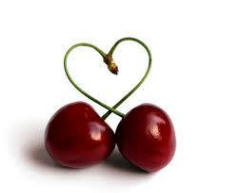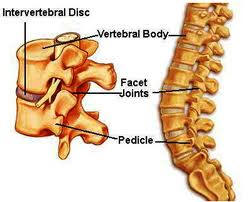
I was amazed to find tart cherries really can help with joint pain from arthritis and other inflammation (like gout), heart disease, diabetes, weight gain and sleep problems. oduces between 70 and 75 percent of the tart cherries grown in the United States, so it’s not unusual to find universities in the state studying them. In separate studies, the University of Michigan and Michigan State found many health benefits from tart cherries.
Tart cherries contain antioxidants that block oxidation, protecting cells from free radicals. So, what's a free radical and why is oxidation bad? A free radical is a cell that is missing an oxygen molecule. They steal oxygen molecules from healthy cells, speeding up aging. The major antioxidants in tart cherries are anthocyanins. These flavonoids provide all the brilliant colors of nature - flowers, fruit, vegetables, and the myriad colors of autumn. Other antioxidants delivered by tart cherries include melatonin and vitamins A, C and E.
Researchers at Michigan State University found that tart cherries inhibit Cyclooxygenase 1 and 2 (COX 1 and 2) enzymes, preventing inflammation in joints. They work very much like NSAIDs, but the cherries actually protect against stomach inflammation. Even better outcomes can be achieved when the cherries are taken together with glucosamine and chondroitin. The glucosamine and chondroitin build cartilage and lubricate joints, while the tart cherries provide pain relief.
Nobody gets gout anymore, right? Wrong. Gout is a form of arthritis caused by a build-up of uric acid. Uric acid produces tiny needle-like crystals (monosodium urate) that are deposited in the open spaces between joints causing inflammation and pain. Flavonoids in tart cherries lower the uric acid and dissolve the crystals.
To prevent excessive motion, over-twisting or toppling over, the segments of the spine are stabilized by a number of structures that nonetheless preserve the flexibility needed to turn, look around and get around. The facet joints, or joints with “small faces” are found at every spinal level (except at the top level) and provide about 20% of the torsional (twisting) stability in the neck and low back. The vertebrae of the chest area are normally far less mobile and permit a small amount of forward/backward and some side bending, and very little twisting.
In the low back, forward-backward bendIn the low back, forward-backward bending is limited to about 12 degrees and lateral (to the side) bending to about 5 degrees. Lower back rotation is limited to only about 2 degrees per segment, since excessive rotation could lead to spinal cord or nerve damage.

At each given spinal level the angle of the facets - relative to a plane running through the body from front to back - varies from more parallel to more perpendicular. Each facet joint is positioned at each level to provide the needed limits to motion, especially to rotation and to prevent forward slipping (spondylolisthesis) of that vertebra over the one below. half of the paired facet joints are attached on both sides on the backside of each vertebra, near its side limits, then extend downward. These faces project forward or towards the side. The other halves of the joints arise on the vertebra below then project upwards, facing backward or towards the midline to engage the downward faces of the upper facet halves.
The facet joints do slide on each other and both sliding surfaces are normally coated by a very low friction, moist cartilage. A small sack or capsule surrounds each facet joint and provides a sticky lubricant for the joint. Each sack has a rich supply of tiny nerve fibers that provide a warning when irritated.
The intervertebral discs are also a type of joint in the spine, and are bound together by flexible fibers in several circling bands, like a tough fire hose, that make up the outer portion of the disc. Disc joints can bend and rotate a bit but do not slide as do most body joints.
Facet joint problems –
back pain from bone spurs and osteoarthritis
Facet joints are in almost constant motion with the spine and quite commonly simply wear out or become degenerated in many patients. When facet joints become worn or torn the cartilage may become thin or disappear and there may be a reaction of the bone of the joint underneath producing overgrowth of bone spurs and an enlargement of the joints. The joint is then said to have arthritic (literally, joint inflammation-degeneration) changes, or osteoarthritis, that can produce considerable back pain on motion. This condition may also be referred to as “facet joint disease” or “facet joint syndrome”.
A protective reflex arrangement arises when the facets are inflamed which causes the nearby muscles that parallel the spine to go into spasm. We therefore see inflamed facets causing crooking and out-of posture of the back, along with powerful muscle spasm. Manually ‘correcting’ this spinal curvature actually depends on relaxing the spastic muscles and not a rearrangement of bony structures.